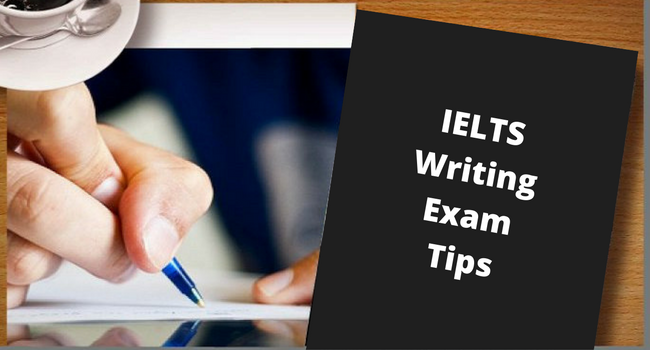If you have decided to register for the IELTS exam, you will need to prepare for this important assessment. You should be familiar with the structure and format of the test, and keep some key rules in mind. You can sign up at British Academy, and choose IELTS exam preparation course.
IELTS is an English language exam that is required to be taken by international candidates considering studying or working in a country where English is the main language of communication. Most popular countries where IELTS is accepted for university admissions are the UK, Australia, New Zealand, USA, and Canada. The exam mainly measures the ability of test-takers to communicate in the four basic English language skills – listening, reading, speaking, and writing. IELTS exam is jointly owned and conducted by IDP Education Australia, British Council, and Cambridge English Language Assessment.
You now have the choice of taking IELTS on paper or on computer in a number of locations.

If you select this option, you will answer the Listening, Reading and Writing sections on a paper. The Speaking test is carried out face-to-face with a trained IELTS Examiner.
If you select this option, you will take the Listening, Reading and Writing sections on a computer. The Speaking test will remain face to face with a trained IELTS Examiner, as we believe it is the most effective way of assessing your speaking skills.
The Listening, Reading and Writing sections of all IELTS tests (Paper-based or Computer-delivered) are completed on the same day. The Speaking section, however, can be completed up to a week before or after the other tests.
There are two types of IELTS: Academic and General Training. Listening and Speaking are the same for both tests, but the subject matter of the Reading and Writing sections differs depending on which test you take.
The Listening, Reading and Writing sections of all IELTS tests are completed on the same day, with no breaks in between them.
The Speaking section, however, can be completed up to a week before or after the other tests. Your test centre will advise.
The total test time is 2 hours and 45 minutes.
IELTS Academic - measures whether your level of English language proficiency is suitable for an academic environment. It reflects aspects of academic language and evaluates whether you’re ready to begin training or studying.
IELTS General Training - measures English language proficiency in a practical, everyday context. The tasks and tests reflect both workplace and social situations.
If you are taking the IELTS test to support a UK visa application to work, live or study in the UK, you may need to take the IELTS for UK Visas and Immigration (UKVI) Academic or General Training or the IELTS for Life Skills test.
Like the Listening section, the Reading section features 40 questions organised in different ways: multiple choice, identifying information (true/false/not mentioned), or a writer’s views/claims. You may also have to match information or complete sentences, summaries, tables and flow-charts. The Reading section features some questions that require only a short answer. You will be expected to write words taken directly from the Reading text on the answer paper, without changing their form.

There are three sections to the IELTS Academic Reading test, and each contains one long text.
• These are taken from books, journals, magazines and newspapers. They have been written for a non-specialist audience and are on academic topics of general interest.
• They range from the descriptive and factual to the discursive and analytical.
• Each text might be accompanied by diagrams, graphs or illustrations, and you will be expected to show that you understand these too.
• A simple glossary is provided if the material contains technical terms.
There are three sections to the IELTS Academic Reading test, and each contains one long text.
These are taken from books, journals, magazines and newspapers. They have been written for a non-specialist audience and are on academic topics of general interest.
They range from the descriptive and factual to the discursive and analytical.
Each text might be accompanied by diagrams, graphs or illustrations, and you will be expected to show that you understand these too.
A simple glossary is provided if the material contains technical terms.
There are three sections to the IELTS General Training Reading test.
The texts used in each section are taken from notices, advertisements, company handbooks, official documents, books, magazines and newspapers.
Section 1 contains two or three short factual texts, one of which may be made up of 6 - 8 short texts related by topic, e.g. hotel advertisements. The topics are relevant to everyday life in an English-speaking country.
Section 2 contains two short factual texts focusing on work-related issues, e.g. applying for a job, company policies, pay and conditions, workplace facilities, staff development and training.
Section 3 contains one longer, more complex text on a topic of general interest.

The Listening section takes approximately 30 minutes to complete (plus 10 minutes to transfer your answers). At the beginning, you will hear the instructions and a sample question. You read the questions in section 1, listen to section 1, and give your answers. The same procedure follows for sections 2, 3 and 4. You then transfer your answers onto the answer sheet.
There are 40 questions in a variety of formats: multiple choice, matching, plan/map/diagram labeling; note, flow-chart, summary or sentence completion; short-answers.

• First, you will hear a conversation between two people set in an everyday social context. The dialogue is easy to follow and you simply need to understand the speakers’ main ideas, attitude and intentions.
• The second section involves listening to a monologue set in an everyday social context. You must pay attention to every detail and you may even be required to recognise a person’s feelings and emotions from the tone of his or her voice.
• In the third part, there is a conversation between up to four people set in an educational or training context. This may include a group of students discussing a project, or planning their work with a teacher or tutor.
• Finally, you will listen to a monologue on an academic subject. You should expect to hear more specialized terms specific to an education environment. Each conversation or monologue is played only once and may include different voices and native-speaker accents. Make sure you write your answers on the question paper while you are listening so you do not miss any information.


You will talk to a certified examiner in the IELTS Speaking test. The test is interactive and as close to a real-life situation as a test can get. A variety of accents may be used, and the test will be recorded.
The content of the IELTS Speaking test is the same for both the IELTS Academic and IELTS General Training tests.
• The introduction and interview last about 4-5 minutes, during which the examiner introduces himself/herself and asks you to introduce yourself. He or she will ask you general questions on familiar topics such as your home, family, work, studies and personal interests. This is so that you can warm up and feel more comfortable with the examination.
• The second part lasts no longer than 3-4 minutes. You will receive a task card and the examiner will ask you to talk about a particular topic. You will have recommended key points which you can include in your discussion. You will have one minute to prepare. You will talk for 1-2 minutes and the examiner may ask you a couple of additional questions.
• The last part of the Speaking section is a 4-5 minute discussion. The examiner will ask you in more detail about the topic from part 2. You will discuss more abstract issues and ideas. It is a good idea to avoid short replies; give detailed, relevant answers to the examiner’s questions whenever you can.

There are two tasks in the Writing section. Whether you choose the Academic Writing or the General Training Writing Test, the total time permitted for both tasks is 60 minutes. Task 1 requires you to write at least 150 words, and task 2 at least 250 words. Your answers should not include separate notes or bullet points, as this will decrease your overall mark
Write in a formal style in the IELTS Academic Writing test.
In Task 1, you will be presented with a graph, table, chart or diagram. You will be asked to describe, summarise or explain the information in your own words. This might involve describing and explaining data, describing the stages of a process or how something works, or describing an object or event.
In Task 2, you will be asked to write an essay in response to a point of view, argument or problem. You should find the issues interesting and easy to understand.
The topics used in the IELTS General Training Writing test are of general interest.
In Task 1, you will be presented with a situation and asked to write a letter requesting information or explaining the situation. You can write the letter in a personal, semi-formal or formal style.
In Task 2, you will be asked to write an essay in response to a point of view, argument or problem. You can use a fairly personal style.

